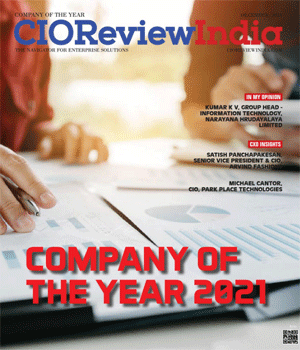
Challenges Faced By Enterprises In Bringing Effective Digital Transformation
Anupam Shrivastav, Head of IT & Business Technology, Sudarshan Chemical Industries Ltd | Tuesday, 15 January 2019, 06:43 IST
 A study by leading researchers indicates that most organisations average out at around 40 percent digitization, which means there is 60 percent digitisation yet to be done. It is important to understand that we are always competing with the digitisation index. Just 5 years back we may be hovering at around 80% digitization but in the years since then the technology has gone to the next level and the benchmark has changed.
A study by leading researchers indicates that most organisations average out at around 40 percent digitization, which means there is 60 percent digitisation yet to be done. It is important to understand that we are always competing with the digitisation index. Just 5 years back we may be hovering at around 80% digitization but in the years since then the technology has gone to the next level and the benchmark has changed.
There are 3 vital pointers from the above stats.
1. Time is ticking louder than ever and with this the scales too are changing faster than ever
2. The Gap between Industry benchmark and your organisation’s digitisation level will keep on widening, hence for survival, action is paramount
3. Today our role is not just of IT operations. IT operations is akin to keeping the lights on, which is critical but routine and should not be more than 20% of our KRA
4. 80% of our effort should be focussed on understanding business best practices versus our business and exploring opportunities to digitise
5. It is possible to take your organisation from 40% to 60% through combinations of leading solutions available in the market. It is the remaining 40% which will demand your best
6. Which demands from us to partner the business in redefining their KRA, as like us, they too are submerged in operational excellence and it is for us to bring the view to them
The point here is that if I don’t act, my competition will. World is full of such examples today and getting wiped out does not take to be decades like it to be.
Now that we have base lined the need, let’s focus on the challenges around the topic.
Step 1 – While we are champions of automation, we have little clue about digital transformation and often mix it up. Hence, the need to have a clear differentiator and understanding is important, and this knowledge needs to be infused to each member of your team, after all they will be your transformations agents, as they interact with different business functions and are your eyes and ears on the ground
Step 2 – Lately, the business functions are also bombarded with the need to digitally transform and have little clue how to go about it beyond what the vendors are recommending and this is where they expect you to pitch in. While some organisations have resolved this issue by hiring Chief Digital Officer, others expect the CIO to take up this job.
Step 3 - Understand the business objective and lead the discussion, ring-fence the core problem and then look for the best solution. Do not get dissuaded by perceived directives around time and money constraints. Build the solution, ensure that it is best in class and build its USP, and earmark it internally as ‘The Solution” with the buy-in of the business team before presenting it to the management for acceptance.
Step 5 – Post implementation, ensure that you track adoption & business benefits to build a success story paving the path for the next ot take decades like it used to be.
Common issues that I have faced in this journey are:
- Business getting into the solutioning mode with not enough deliberation & due diligence and then undoing becomes a precious time consuming task
- Lack understanding of how digital transformation is different than automation, hence missing the larger picture and looking at short term gains rather than long term
- Do not see the levers it gives them to exponentially improve their business
- Impatient and resistant towards systematic and methodical approach
- Not linking digitalization with goals set by the organisation & BOD
It is important to keep in perspective that Digital Transformation is not necessarily about digital technology, but about the fact that technology, which is digital, and allows people to solve their traditional problems. And they prefer this digital solution to the old solution.
The transformation stage means that digital usages inherently enable new types of innovation and creativity in a particular domain, rather than simply enhancing and supporting traditional methods.
In a narrower sense, "digital transformation" may refer to the concept of "going paperless" and reaching a "digital business maturity" which affects both individual businesses and whole segments of society, such as government, mass communications, art, medicine, and science.
It is key to note that the impact of going digital has been profound, and most are struggling to realise the full potential of what digitisation is. According to the McKinsey Global Institute's Industry Digitization Index, Europe is currently operating at 12% of its digital potential, while the USA is operating at 18%. This clearly demonstrates that, while business processes are undergoing great change making much progress in the adoption of digitisation, even advanced economies are struggling to exploit the full potential of digitisation.
CIO Viewpoint
How Can MSME Digitally Grow Business During...
By Srivaths Varadharajan
It's Time We Breakdown Our Data Security Fallacies
By Priyank Kothari, Head - Information Security, Tesco
The Right Side Of Digital Transformation
By Upinder Phanda, Vice President and CIO, Unisys Corporation
CXO Insights
By DR. Makarand Sawant, Senior General Manager IT, Deepak Fertilizers and Petrochemicals Corporation Limited
The State Of Customized Lending
By Sean Hunter, Chief Information Officer at OakNorth
10 Common Types Of Malware And How To Combat...












